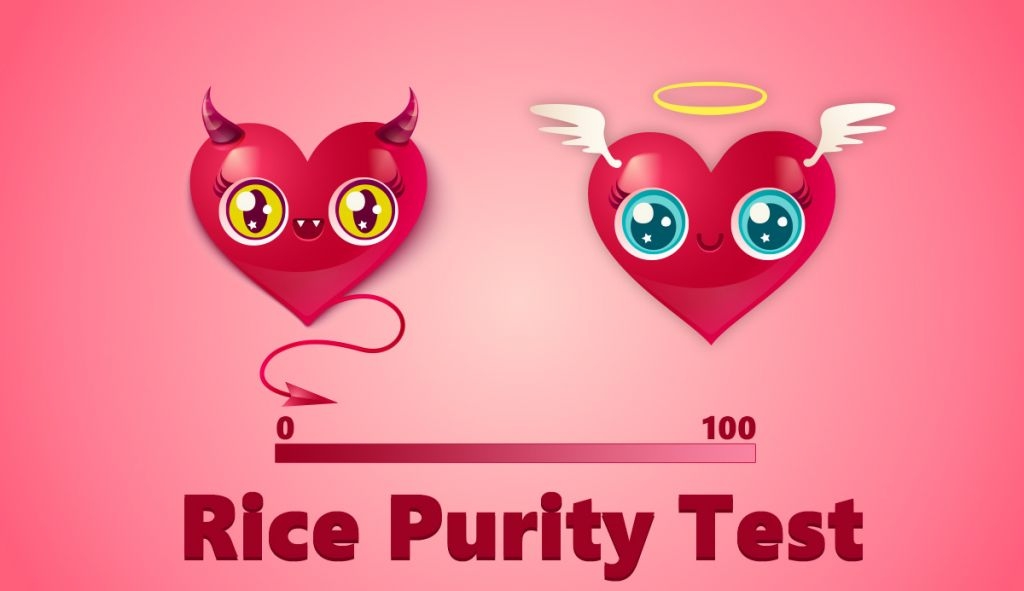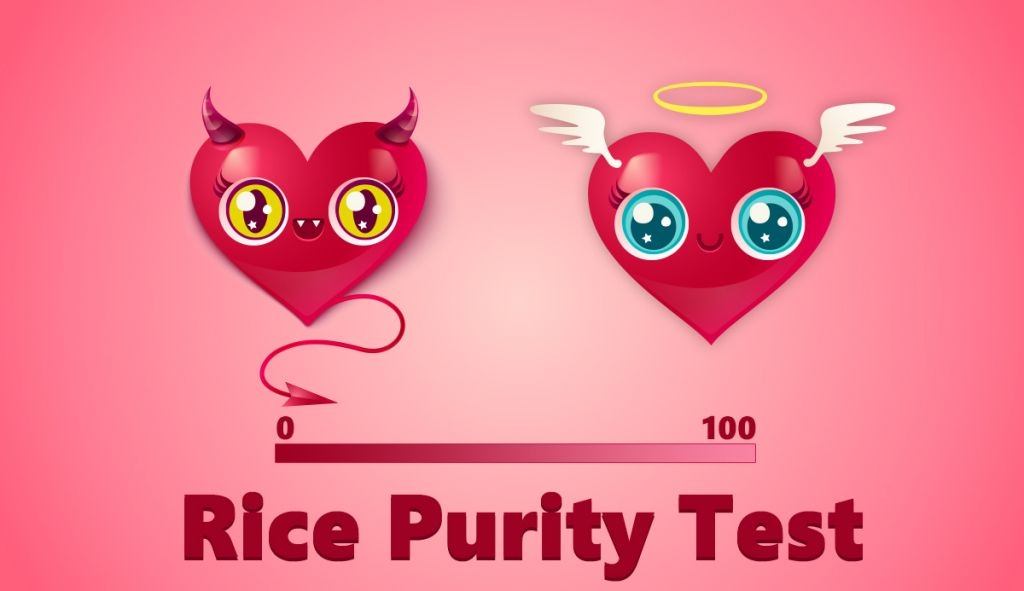The Rice Purity Test is a self-graded survey that measures an individual's perceived level of "innocence" in matters related to social, moral, and sexual behavior. Originating from Rice University, Houston, Texas, the test initially served as an orientation activity for incoming college freshmen to track their progression into the university lifestyle. The tool has since transcended its original purpose, becoming an online sensation and a popular self-assessment tool worldwide.

Origins and Purpose
The test has its roots in Rice University's traditions, where it was initially used as a bonding experience for college freshmen. It was introduced as a tool to help students track how their social, moral, and sexual experiences broadened over their time at university. The original Rice Purity Test comprised 100 yes-or-no questions, each representing an activity considered a marker of "worldliness."
The purpose of the test was neither to promote nor discourage certain behaviors but to provide a baseline for students to gauge their experiences against their peers. The test's score, ranging from 0 to 100, is calculated by subtracting the number of 'yes' answers from 100. A higher score indicates a higher level of 'innocence' or inexperience in certain activities. It's important to remember that the test was created in a lighthearted spirit and should not be taken as a serious gauge of moral or ethical purity.
Content and Structure
The Rice Purity Test's 100 questions cover a broad spectrum of experiences. The subjects range from seemingly innocent actions such as holding hands or kissing, to more mature and serious activities involving drug use, sexual behavior, and encounters with law enforcement. Each question is designed to be a binary 'yes' or 'no' response, with no room for ambiguity or explanation.
The test's structure is intentionally broad and inclusive to account for the wide variety of experiences that may occur in a typical university setting. It is worth noting that due to cultural, personal, or legal reasons, not all activities listed are advisable or appropriate for everyone.
Critiques and Considerations
Despite its widespread popularity, the Rice Purity Test is not without criticism. Some argue that the test reinforces harmful societal norms, particularly regarding sex and drug use. It is also argued that the test could potentially glamorize risky behaviors, as lower scores might be seen as a badge of honor among some peer groups.
Moreover, the test's binary nature does not account for the context of actions. A 'yes' or 'no' answer may not adequately represent the complexity of a person's experiences, leading to potential misinterpretation of the results. Furthermore, the test doesn't consider cultural differences and personal beliefs, which could significantly impact a person's score.
Despite these critiques, the test remains a popular tool, particularly among young adults who are curious about their experiences in relation to their peers.
Interpreting the Results
Interpreting the Rice Purity Test requires a level of self-awareness and understanding that the test is not a definitive measure of character or moral standing. The score merely reflects the number of experiences one has had from a predetermined list, which may or may not align with societal expectations or personal values.
A high score typically indicates fewer experiences related to the activities listed in the test and is often associated with 'innocence'. A lower score, on the other hand, suggests a broader range of experiences. It's essential to understand that neither a high nor a low score is inherently good or bad. Each person's experiences are their own, and a test score should not define one's self-worth or value.
The Cultural Impact of the Rice Purity Test
The cultural impact of the Rice Purity Test extends beyond the borders of Rice University. The test's online popularity has made it a global phenomenon, prompting discussions about personal experiences, societal norms, and individual value systems. By providing a platform for such conversations, the Rice Purity Test inadvertently promotes self-reflection and awareness among its participants.
Social media platforms, particularly those popular among younger demographics, have seen a surge of discussions and content related to the Rice Purity Test. It has become a common trend for users to share their scores, initiating conversations about shared experiences and diverse backgrounds. This phenomenon provides a unique insight into the different societal and cultural values that shape the experiences of the younger generation worldwide.
However, the test's viral nature has also sparked debates about its potential to negatively impact self-esteem and perpetuate harmful stereotypes. The discourse surrounding the Rice Purity Test underscores the need for responsible usage and interpretation of such tools.
Influence on Modern Psychology and Sociology
While the Rice Purity Test is not a scientific tool, its wide usage and the discussions it generates have intrigued modern psychologists and sociologists. The test provides a snapshot of the behaviors and experiences prevalent among university-aged individuals, serving as an indirect tool for understanding current societal norms and youth culture.
However, it's crucial to remember that the Rice Purity Test, though fascinating, is not a definitive or comprehensive tool for studying human behavior or societal trends. Its binary format and the lack of contextual understanding limit the breadth and depth of insights it can provide.
Nevertheless, the test's influence on modern discussions about youth experiences, societal norms, and purity concepts cannot be ignored. It has encouraged more open conversations about previously taboo subjects and fostered a spirit of self-exploration and understanding among its participants.
Conclusion
The Rice Purity Test is a unique phenomenon, bridging the gap between an orientation activity for university students and a worldwide online trend. Its popularity is indicative of the curiosity and self-reflection that characterizes the modern digital age.
While the test has its share of criticisms and limitations, it also offers an opportunity for introspection and dialogue about personal experiences and societal expectations. As with any self-assessment tool, it's crucial to approach the Rice Purity Test with a clear understanding of its intent and limitations, recognizing that it is not a measure of one's worth or morality.
In the end, the Rice Purity Test is a reflection of the complex tapestry of human experiences, offering a unique, if imperfect, lens through which to view our own journey and those of others around us. Its enduring popularity is a testament to the inherent human desire for self-understanding and the power of shared experiences in fostering community and connection.


